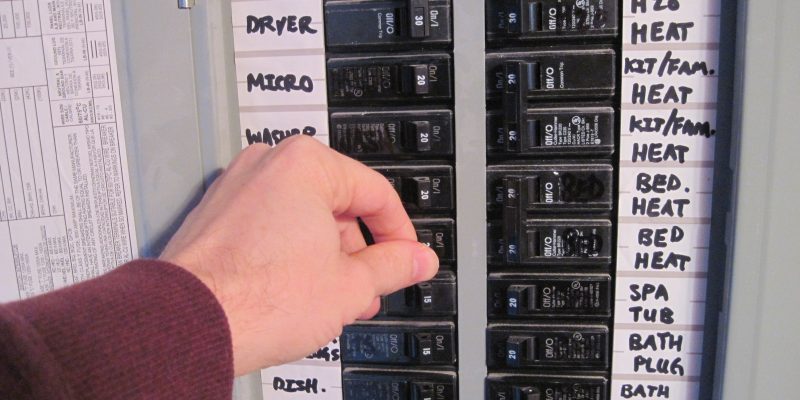How to Reset a Tripped Circuit Breaker
When a Circuit Breaker Trips
When a circuit breaker trips and the power goes off to a circuit in your home, do you know how to reset it? Each circuit in a home is protected by a circuit breaker that is housed inside the home’s main service panel, or breaker box. The purpose of a circuit breaker is to trip, or turn itself off, at a predetermined amperage load. For example, if a circuit breaker is rated at 20 amps, it has been designed and tested to allow up to and including 20 amps to flow through it, but nothing more.
Once that limit is reached, the circuit breaker will trip, opening the circuit and shutting off the power.
How to Tell If a Breaker Has Tripped
There are a couple of ways of confirming that a circuit breaker has tripped. Open the door to the service panel and look at the toggles—the little black tabs—on the breakers. Most of the toggles will be pointing toward the center of the panel. This means they are in the ON position. If a toggle is pointing away from the panel’s center, it is in the OFF position. If it’s in between, the breaker has tripped. Sometimes you have to look closely because the tripped position is not much different from the ON position.
Additionally, some breakers have a little indicator window that tells you when the breaker has tripped. If the window shows green or black, the breaker is on. If it shows red, or perhaps halfway between green/black and red, the breaker has tripped.
How to Reset a Breaker
All breakers are the same in that you have to turn them off before you turn them on again. To do this, simply flip the tripped breaker’s toggle toward the outside of the panel, to the OFF position. Then, flip it back toward the center of the panel, to the ON position. If the breaker trips again right away, do not try to reset it again.
There’s is clearly a problem with the circuit. Turn the breaker to the OFF position and investigate the problem and/or call an electrician. If the breaker stays on and all appears to be normal, it’s still a good idea to determine what tripped the breaker in the first place. Always close the panel door before leaving the area.
Investigating a Tripped Breaker
Often the cause of a tripped breaker is obvious. If you were running a high-demand appliance or tool, such as a vacuum cleaner, a space heater, or a power tool, at the time when the power went out, the appliance probably overloaded the circuit. In this case, try plugging into a different outlet, preferably one over a kitchen counter or one in the garage; these are 20-amp circuits rather than the 15-amp circuits you find in bedrooms, living rooms, hallways, etc. Another common cause is a faulty device or wiring. If you plugged in an appliance, tool, lamp, or other device and the breaker tripped right away, there’s probably a short in the device or the cord; time to replace the device or cord.
If a breaker is prone to tripping and there’s no obvious cause, it could indicate a problem in the circuit wiring. Turn off and unplug everything on the circuit, then reset the breaker.
If it trips, turn off the breaker and call an electrician. There’s likely a short somewhere in the circuit wiring, and this can be very dangerous. Many house fires have been started by nothing more than a loose wire on a fixture or outlet or by damaged wire insulation.
If the circuit breaker continues to trip, call the licensed electricians at Penna Electric for an inspection, free estimate, or a paid service call at (310) 800-2401.



